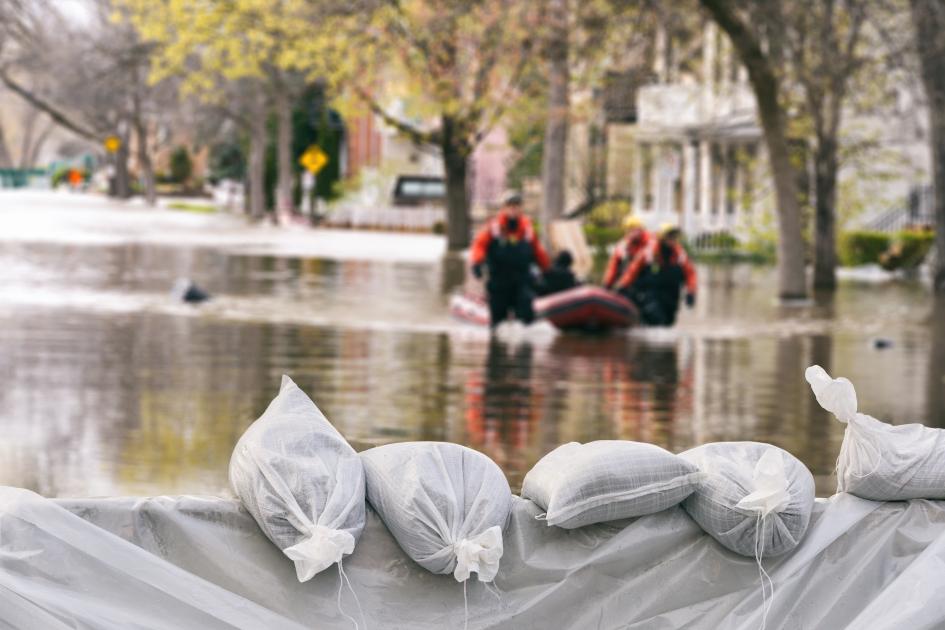In the face of adversity, there are those who rise above the chaos and lend a helping hand. They are the unsung heroes, the disaster relief organizations that become beacons of hope in the darkest of times. With their quick response, unwavering determination, and unwavering commitment, these organizations are the first to be on the ground, providing vital help, support, and comfort to those affected. With their unparalleled expertise, dedicated volunteer teams, and strategic resources, these organizations bring together a variety of skills and resources to meet the urgent needs of impacted communities. But what sets these remarkable organizations apart? It is their ability to mobilize quickly and coordinate efforts with local authorities, international partners and communities. By empowering communities, these organizations foster a sense of unity, resilience, and preparedness that transcends borders and cultures.

What can disaster relief organizations do to help?
When a disaster strikes, these organizations mobilize quickly to provide urgent relief and support to affected communities. They use highly trained teams of professionals and volunteers equipped with essential supplies and equipment. These teams are often the first on the scene, providing immediate medical assistance, search and rescue, and distributing emergency supplies including food, water and shelter materials. The organizations work with communities to develop comprehensive plans to rebuild infrastructure, homes and livelihoods. This includes building temporary or permanent shelters, restoring access to clean water and sanitation, and revitalizing educational institutions. In addition, they provide psychosocial support to help survivors cope with trauma, grief and loss, thereby promoting resilience and emotional healing. They work hand-in-hand with local people, empowering them to take an active part in the recovery process by providing training in disaster risk reduction, risk reduction and sustainable practices. By building local capacity, these organizations ensure communities are better equipped to deal with future crises and reduce their vulnerability to disasters.
The most important disaster relief organizations
The world is fortunate to have several major charities that have made a significant contribution in providing aid and support. One such organization is Médecins Sans Frontières (Doctors Without Borders). Founded in 1971, this international medical and humanitarian organization provides essential health services in areas affected by conflict, epidemics and natural disasters. Their teams of highly qualified doctors, nurses and support staff work tirelessly to provide medical care, including surgery, vaccinations and emergency treatment. Another notable organization, the United Nations International Children’s Fund (UNICEF), is known for its work to protect and promote the rights of children affected by disasters. Working with governments and local partners, the organization provides essential services such as nutritional support, access to clean water and sanitation, education and child protection programs to ensure the well-being of children in emergencies. The International Federation of Red Cross and Red Crescent Societies (IFRC) is another organization worth mentioning. With a vast network of National Societies in almost every country, the IFRC operates worldwide providing emergency response, disaster risk reduction and long-term recovery programs. They work closely with local communities, governments and other humanitarian actors to provide timely and effective assistance.

Ways to help disaster organizations
There are numerous ways individuals can contribute and support disaster relief organizations. By donating their time, skills, resources, or financial contributions, individuals can make a meaningful contribution. One of the most direct ways to help is through volunteering. Many organizations are actively looking for volunteers who can offer their skills and expertise to help with emergencies, medical assistance, construction, and counseling. Financial donations are another important way to support these organizations. Monetary donations enable organizations to procure and distribute essential goods. Individuals can donate directly to reputable organizations or specific disaster relief funds. Even small donations collectively can make a significant contribution to helping communities rebuild their lives. Those who are unable to donate financially or volunteer can raise awareness by sharing information about current crises, fundraisers, and the work of these organizations to generate public interest and support. This can be done through social media, community events, fundraisers, or simply by talking to friends, family, and co-workers. Increased awareness leads to more support, amplifying the efforts of these organizations and inspiring others to get involved.
